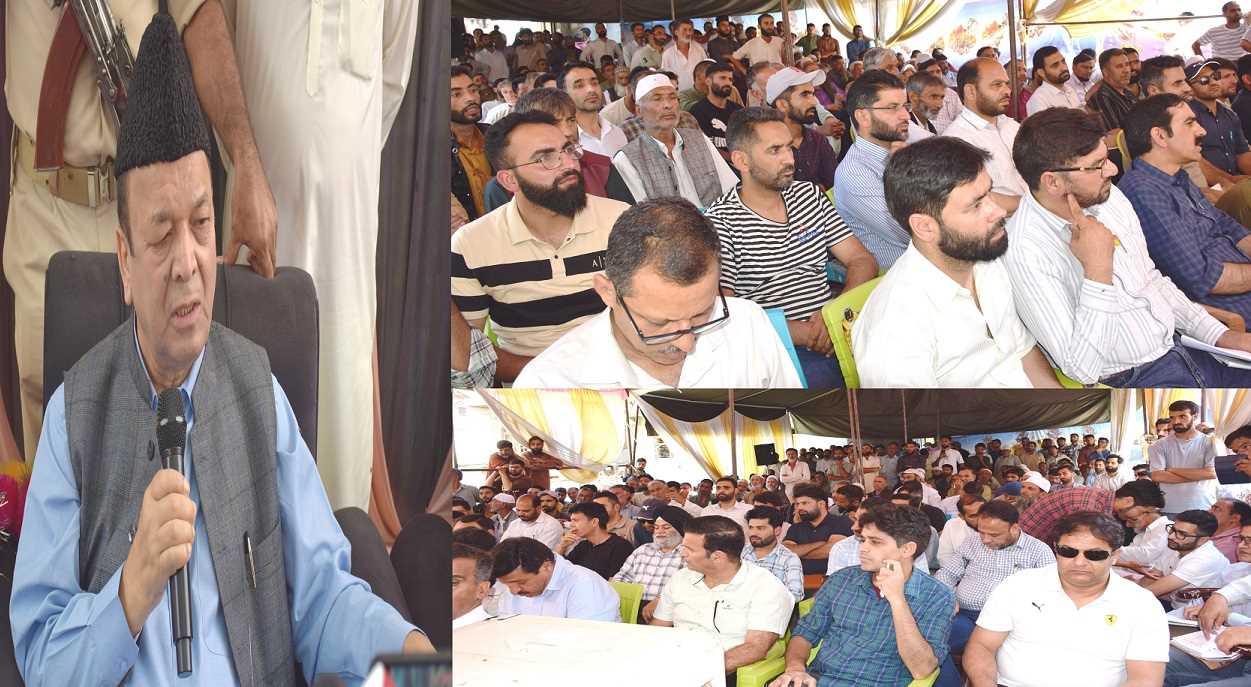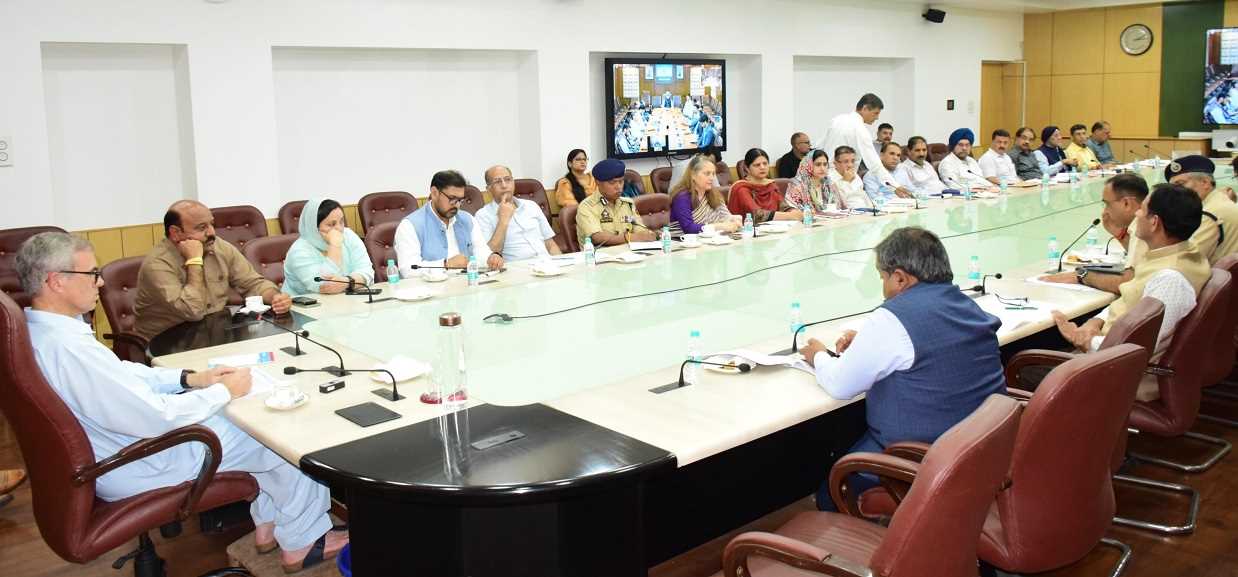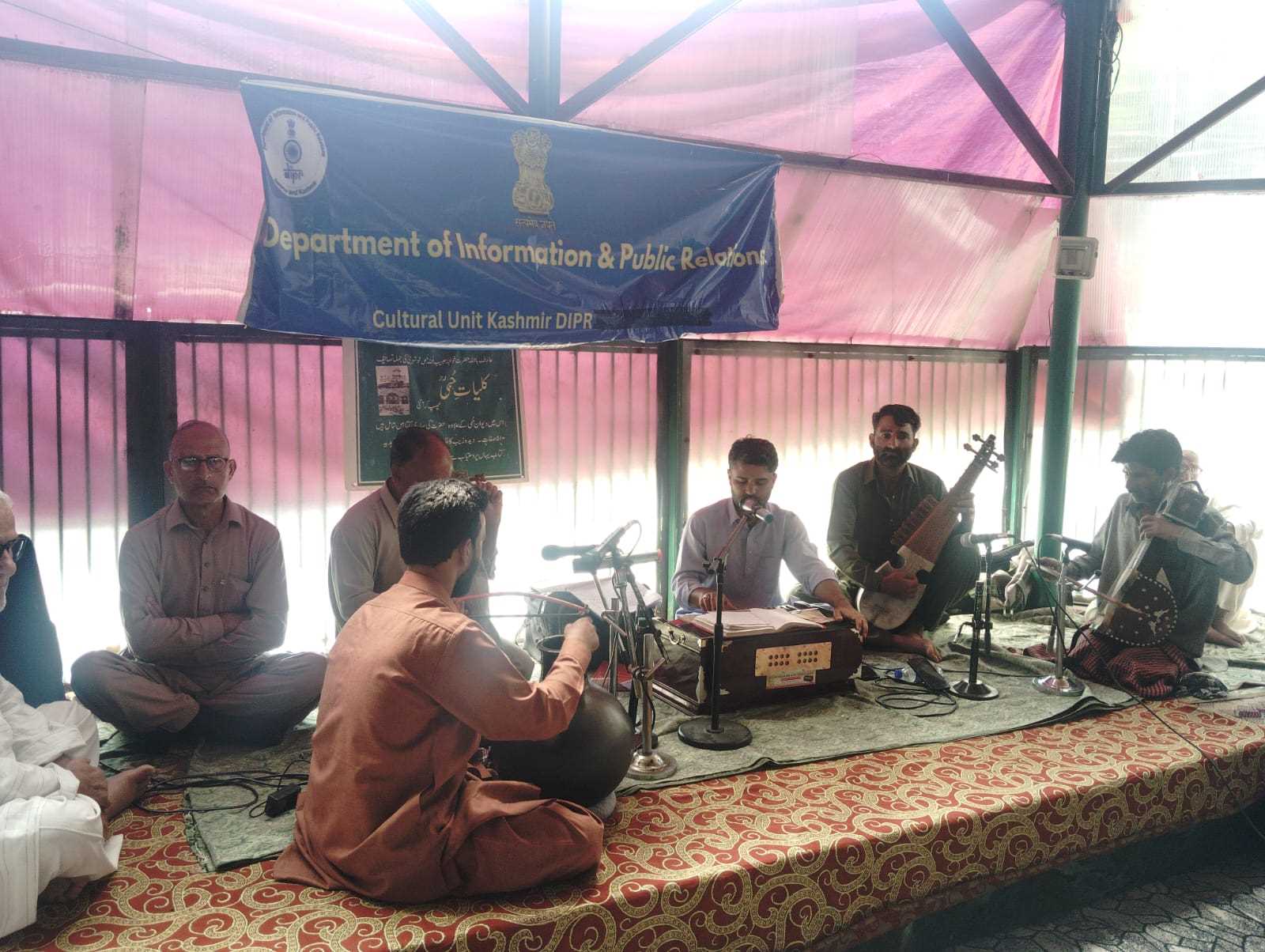The Himalayan glaciers of Kashmir and Ladakh, often referred to as the "water towers of Asia," are critical to the hydrological systems of South Asia, supporting millions of people with freshwater for drinking, agriculture, and energy. These glaciers, snuggled within the rugged terrains amongst the towering Pir Panjal, Greater Himalayas, Zanskar, and Karakoram ranges, are under increasing threat from multiple anthropogenic and environmental pressures. Climate change, with its rising temperatures and shifting precipitation patterns, is accelerating glacier retreat at an alarming rate. Simultaneously, the urban heat island (UHI) effect, driven by rapid urbanization in nearby towns and cities, exacerbates local warming, indirectly influencing glacial melt. Adding to this complex interplay is the widespread use of corrugated tin roofs in the region, a common construction choice that alters local microclimates and energy dynamics. Together, these factors including climate change, UHIs, and tin roofs form a triad of influences that threaten the stability of the Himalayan glaciers in Kashmir and Ladakh, with profound implications for water security, ecosystems, and livelihoods. This essay examines each factor’s role, their interconnections, and their cumulative impact on these fragile ice reserves.
Climate Change and its Direct Impact on Himalayan Glaciers
Climate change is the most significant driver of glacier retreat in Kashmir and Ladakh, manifesting through rising global temperatures, altered precipitation patterns, and increased frequency of extreme weather events. The Intergovernmental Panel on Climate Change (IPCC) reports that the Earth’s average surface temperature has risen by approximately 1.1°C since pre-industrial times, with mountainous regions like the Himalayas experiencing even higher warming rates—up to 1.2°C in the last century, according to regional studies. This amplified warming is particularly pronounced at higher altitudes, where glaciers are sensitive to even minor temperature shifts. In Kashmir and Ladakh, home to around 18,000 glaciers, including giants like Siachen and Kolahoi, the effects are stark. Research indicates that the Kolahoi Glacier, a primary water source for the Jhelum River, has lost 23% of its area since 1962, fragmenting into smaller segments due to sustained melting.
The mechanisms of this retreat are multifaceted. Rising temperatures accelerate ablation—the process by which glaciers lose mass through melting and evaporation—outpacing accumulation from snowfall. In Kashmir, winter temperatures have increased, and snowfall, which traditionally replenishes glacier mass, has declined or shifted to rainfall due to warmer conditions. The winter of 2023–2024, for instance, was the driest on record in Jammu and Kashmir, with Srinagar recording its hottest winter in 18 years. This reduction in snow accumulation weakens glaciers’ ability to “fight back” against summer melt, as noted by glaciologists. In Ladakh, where 85% of water comes from snow and glaciers, the impact is even more severe, with glaciers thinning by an average of 1.27 meters between 2000 and 2020 in the Drass basin.
Beyond temperature, climate change introduces secondary stressors. Black carbon—a byproduct of incomplete combustion from biomass burning and vehicular emissions—settles on glacier surfaces, reducing albedo (reflectivity) and increasing solar absorption. This dark layer hastens melting, particularly in Kashmir, where local wood-burning for heating and cooking is common. Additionally, changing precipitation patterns, driven by weakened Western Disturbances and erratic monsoons, disrupt the seasonal water cycle. Less snowfall in winter and unpredictable rainfall in summer fail to compensate for glacial losses, leading to a net decline in ice volume. Projections suggest that at current emission rates, Kashmir could lose 78% of its glaciers by 2100, with half disappearing by 2050, threatening downstream water availability for agriculture, hydropower, and domestic use across the Indus basin.
The consequences extend beyond water scarcity. Melting glaciers contribute to the formation of proglacial lakes, increasing the risk of Glacial Lake Outburst Floods (GLOFs). In Jammu, Kashmir, and Ladakh, over 100 such lakes have been identified, particularly in Ladakh and the Chenab Valley, posing a catastrophic threat to downstream communities. The rapid retreat also destabilizes mountain ecosystems, affecting biodiversity and triggering landslides in the fragile Himalayan terrain. Thus, climate change acts as a relentless force, directly eroding the glacial reserves that sustain life in this region.
Urban Heat Island Effect in Kashmir and Ladakh
While climate change operates on a global scale, the urban heat island (UHI) effect introduces a localized layer of warming that indirectly influences Himalayan glaciers. UHIs occur when urban areas, with their concrete structures, asphalt roads, and reduced vegetation, absorb and retain more heat than surrounding rural landscapes. In Kashmir and Ladakh, rapid urbanization in towns like Srinagar, Leh, and Jammu has intensified this phenomenon, raising local temperatures by as much as 2°C compared to adjacent rural areas. This urban warming, though concentrated in valleys and plains, has a cascading effect on the high-altitude glaciers due to atmospheric heat transfer and altered microclimates.
In Srinagar, the summer capital of Jammu and Kashmir, sprawling urban development has replaced green spaces and water bodies with impervious surfaces. The city’s population has swelled, and its built-up area has expanded, reducing per capita green space and amplifying heat retention. Studies of urban heat islands in India, such as those in megacities like Delhi, show that UHIs can increase nighttime temperatures, preventing cooling and sustaining higher ambient conditions. In Srinagar, this effect is compounded by its valley location, where trapped heat lingers, radiating upward toward the surrounding mountains. Similarly, Leh, the largest town in Ladakh, has seen a 50% increase in built-up area over recent decades, driven by tourism and population growth. The replacement of traditional mud-brick homes with modern materials intensifies heat absorption, elevating local temperature. The UHI effect influences glaciers through several pathways. First, warmer air masses from urban centers rise and interact with the cooler, glacier-laden altitudes, contributing to atmospheric warming. While the direct temperature increase at glacial heights may be modest, even a fraction of a degree accelerates melting over time. Second, UHIs exacerbate regional heatwaves, which have become more frequent and intense due to climate change. During the 2024 heatwave in northern India, temperatures in Srinagar and Leh soared, amplifying ablation rates in nearby glaciers like Kolahoi and those in the Drass region. Third, urban activities—such as vehicular emissions and industrial processes—release heat and pollutants, including black carbon, which drift toward the Himalayas, further darkening glacier surfaces.
The urban footprint in Kashmir and Ladakh, though smaller than in India’s megacities, is significant given the region’s proximity to glaciers. Srinagar lies just 50–100 kilometers from major glaciers like Kolahoi, while Leh is even closer to the Zanskar and Karakoram ranges. This proximity means that UHI-induced warming can quickly influence glacial microclimates, particularly during summer when melt rates peak. Moreover, the loss of vegetation in urbanizing areas reduces evapotranspiration—the cooling process by which plants release water vapor—further intensifying local heat. As tourism booms and infrastructure expands, the UHI effect in these regions is poised to grow, adding a localized stressor to the broader challenge of climate change.
Role of Corrugated Tin Roofs
Corrugated tin roofs, widely adopted in Kashmir and use is gaining importance also in Ladakh for their affordability, durability, and ease of installation, represent a third factor impacting the Himalayan glaciers. These metallic roofs, replacing traditional materials like mud, wood, or slate, alter local energy dynamics in ways that amplify warming and indirectly affect glacial stability. In rural villages and urbanizing towns alike, tin roofs have become ubiquitous, from homes in Srinagar’s outskirts to tourist lodges in Leh, reflecting a shift driven by modernization and climate resilience needs—ironically, against the very conditions they exacerbate.
Tin roofs have a high thermal conductivity and low albedo compared to traditional materials. Unlike mud or wood, which absorb heat slowly and release it gradually, corrugated tin rapidly absorbs solar radiation during the day, reaching surface temperatures of 50–60°C in summer. This heat is then radiated back into the environment, raising ambient air temperatures around buildings. In densely packed settlements, such as Srinagar’s old city or Leh’s tourist hubs, the cumulative effect mimics a micro-UHI, intensifying local warming. Studies of reflective roofing materials globally suggest that dark, metallic surfaces like tin can increase surrounding air temperatures by 1–2°C compared to lighter, more reflective alternatives, a phenomenon observable in Kashmir and Ladakh’s sun-drenched landscapes.
This localized heating has several implications for glaciers. In valley towns near glacier-fed rivers, such as Anantnag or Kargil, tin roofs contribute to warmer microclimates that elevate stream temperatures as runoff from heated surfaces enters waterways. Warmer water accelerates downstream glacial melt by reducing the thermal gradient that slows ablation at glacier termini. Additionally, the heat radiated from tin roofs contributes to the broader atmospheric warming that reaches higher altitudes. While the direct impact of a single roof is negligible, the widespread adoption across thousands of structures creates a significant aggregate effect, particularly in summer when solar insolation is strongest.
Tin roofs also interact with climate change and UHIs in synergistic ways. Their heat retention amplifies urban warming in towns already affected by the UHI effect, creating hotspots that radiate heat toward surrounding mountains. In Ladakh, where traditional homes once moderated temperature extremes, the shift to tin roofs has coincided with rising summer temperatures, exacerbating the regional heat load. Moreover, during winter, tin roofs cool rapidly at night due to their low thermal mass, potentially increasing reliance on wood or fossil fuel heating—sources of black carbon that further darken glaciers. This feedback loop ties tin roofs into the larger climate change narrative, making them an unintended contributor to glacial retreat.
However, tin roofs are not without benefits. Their durability withstands heavy snowfall and monsoon rains, which are becoming erratic due to climate change, and their low cost supports impoverished communities. Yet, these advantages come at an environmental cost, as their thermal properties undermine the region’s efforts to mitigate warming. Alternatives like green roofs or high-albedo coatings could offset these impacts, but adoption remains limited due to economic and logistical barriers.
Cumulative Impacts
The interplay of climate change, UHIs, and corrugated tin roofs creates a compounding effect on the Himalayan glaciers of Kashmir and Ladakh. Climate change sets the stage with global warming, driving baseline temperature increases that melt glaciers directly. UHIs amplify this warming locally, particularly in urbanizing valleys, sending heat and pollutants toward glacial zones. Tin roofs, meanwhile, act as micro-heat generators, intensifying both urban and rural warming while contributing to the atmospheric and hydrological changes that hasten glacial retreat. Together, they form a vicious cycle: warmer temperatures from climate change and UHIs increase ablation, which tin roofs exacerbate through localized heat and runoff, further accelerating melt and reducing albedo via black carbon deposition.
This cumulative impact is evident in glacier mass balance studies. The Kolahoi Glacier’s retreat, for instance, correlates not only with rising global temperatures but also with regional heat anomalies linked to Srinagar’s UHI and the proliferation of tin roofs in the Jhelum Valley. In Ladakh, the thinning of Drass glaciers aligns with Leh’s urban expansion and the replacement of traditional roofing, suggesting a localized human footprint atop global climate trends. The resulting glacier loss—estimated at 5.32 square kilometers in Drass between 2000 and 2020—threatens water security for over 2 billion people downstream, alongside economic sectors like agriculture and tourism in Kashmir and Ladakh.
Environmental and Societal Fall Out
The combined effects reverberate across ecosystems and communities. Ecologically, glacier retreat disrupts river flows, with the Jhelum and Indus rivers experiencing lower summer discharges, imperiling aquatic biodiversity and downstream irrigation. Proglacial lakes, like those in Ladakh, heighten GLOF risks, as seen in the 2023 South Lhonak Lake breach in Sikkim. Socially, water scarcity looms large, with Ladakh’s farmers already noting earlier meltwater flows that mismatch planting seasons. Tourism, a lifeline for both regions, suffers as snowless peaks—like Gulmarg in 2024—deter visitors, with cancellations reaching 80% during dry winters. Health risks also rise, as UHIs and heatwaves strain vulnerable populations, while tin roof-induced temperature swings indoors challenge traditional lifestyles.
Mitigation and Future Strategies
Addressing these impacts requires a multi-pronged approach. Mitigating climate change demands global emission reductions, but regional actions can buffer local effects. Expanding green cover in urban areas like Srinagar and Leh—through parks, wetlands, and tree planting—could reduce UHI intensity, as seen in Singapore, where an 8% increase in blue-green infrastructure lowered temperatures by 1.21°C. Replacing tin roofs with reflective coatings or green roofing, as piloted in Indian cities, could cut local heat generation, though costs remain a hurdle. Glacier monitoring, coupled with early-warning systems for GLOFs, offers a proactive defense, while sustainable urban planning—limiting sprawl and preserving vegetation—can curb UHI growth.
Future prospects hinge on adaptation and awareness. Kashmir and Ladakh’s governments, supported by institutions like the Himalayan Forest Research Institute, are initiating observational studies and community education. Yet, scaling these efforts requires funding and transboundary cooperation across the Indus basin. Without concerted action, the glaciers face a bleak trajectory, with projections of near-total loss by 2200 if warming exceeds 4–5°C.
Word of Caution
The Himalayan glaciers of Kashmir and Ladakh stand at a crossroads, besieged by climate change, urban heat islands, and the use of corrugated tin roofs. Climate change drives relentless warming, UHIs amplify it locally, and tin roofs add a pervasive micro-layer of heat, together accelerating glacial retreat beyond natural thresholds. This triad threatens not just the ice but the lifeblood of a region—its water, ecosystems, and people. While global solutions are critical, local interventions offer hope, from greening urban spaces to rethinking roofing choices. The fate of these glaciers rests on our ability to act swiftly, blending science, policy, and community resolve to preserve this vital lifeline for generations to come.
Email:-----------------------------hamwani24@gmail.com









